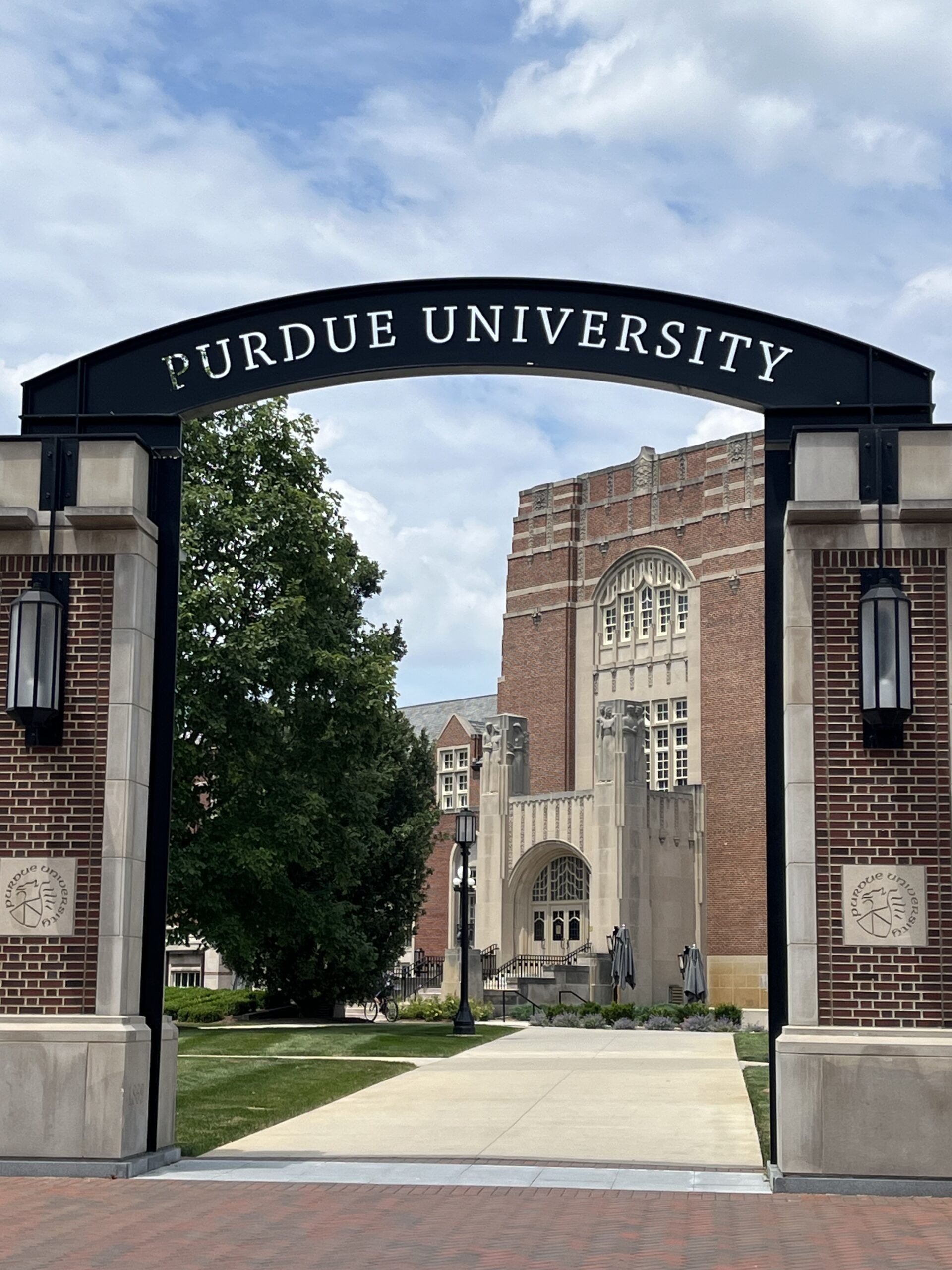One the Road with Betsy Woolf: Indiana Wants You!

I spent almost a week in June in Indianapolis, a city I had not visited in some years. I was there for the US Trials in Swimming in advance of the Summer Olympic Games in Paris. While there, I took three side trips to revisit three universities: Indiana University in Bloomington, Purdue University in West Lafayette and Rose-Hulman Institute of Technology in Terre Haute. Each one is an hour from Indy, an easy car ride.
Indiana University
IU Bloomington is the core campus of the Indiana state system. The university was quiet in June, although I did pass a small encampment on my way to the Admissions Office, which was across the street from the IU Chabad where a banner proclaiming “Bring Them Home” was flying.
Indiana University is pretty – and it’s big, over 38,000 undergrads. The center of the campus is a park-like setting surrounded by buildings constructed of limestone. There is even a hotel on campus. Bloomington certainly is a college town, with so many restaurants that I gave up counting, and three state parks and two lakes nearby. The big event on campus is the Little 500, the largest collegiate bike race in the United States, memorialized in the 1979 film, Breaking Away.
IU is also a Division 1 school, an early member of the big 10 Conference, with lots of spirit, especially around basketball. (The Hoosier State is, after all, a bastion of basketball.) I typically stop at the aquatics center when I am on campus to peer through the class doors of the natatorium and watch the swimmers at practice. Famous swimmers who have swum for the university include Mark Spitz and more recently, Lily King.)
Academically, IU is probably best known for its Kelley School of Business where Mark Cuban earned his degree and its Jacobs School of Music (including opera), but there’s a lot more: schools of arts and sciences; education; art, architecture and design; global and international studies; informatics, computing and engineering; nursing; media; public health; social work (including labor studies); and public and environmental affairs. There is also an Honors College.
Purdue University
Purdue is just two hours from Chicago in an area of around 180,000 people. Tthere are over 39,000 undergraduate students at Purdue. Around 47% of students hail from Indiana, and tuition has been frozen for out-of-staters at just over $41,000.
Like Indiana, Purdue is a Big 10 school with lots of spirit. The campus hosts 12 colleges or schools, including agriculture, nursing, education, health sciences, technology, veterinary technology, consumer and family sciences, management and liberal arts. It is probably best known for engineering – it says it is the first School of Engineering in the US – and has produced a bevy of members of the US astronaut program (more than 20), including Neil Armstrong, the first man to set foot on the moon, and astronauts who have lived at the International Space Station. Around a third of students are in the engineering school, and it should come as no surprise that the school offers motorsports engineering.
I was happy to see how nice the campus looked – flat and spread out with lots of red brick, quads and green spaces – and that West Lafayette, a college town, seems to be enjoying a resurgence. Politically, it was a relatively quiet campus last year.
One note is that the former IUPUI in Indiana is defunct and that both Purdue and Indiana U are opening up their own individual campuses in the city.
Rose-Hulman Institute of Technology
In contrast to the Big 10 schools, Rose-Hulman is small, only 2150 students, and it is primarily an undergraduate institution. Its out-of-state population hovers around 73%. Although students do have to take a number of humanities classes, this is a school where the majors are in engineering and science, including engineering design, optical engineering, software engineering, nanoengineering, math and physics, among others. There is a newish international studies major, but it is offered only as a secondary major. And there are minors, such as music, art, economics and entrepreneurial studies. The philosophy is for students to study more broadly within engineering and the sciences and then focus more when going on to grad school
Although a Division III school, around a third of the student body participate in NCAA Athletics. There is a tradition here of students keeping their dorm room doors open, and there is a pretty lake on campus. The maker spaces on campus are large and impressive. Hands-on learning and collaboration are emphasized. All students take a common freshman year course of study, and all participate in at least one co-op program. A big day on campus is Pi Day, a day – March 14 – to celebrate the mathematical constant, Pi, which also serves as Rose-Hulman’s Giving Day. Why March 14th? Because the first three numbers of Pi are 3, 1, 4.

